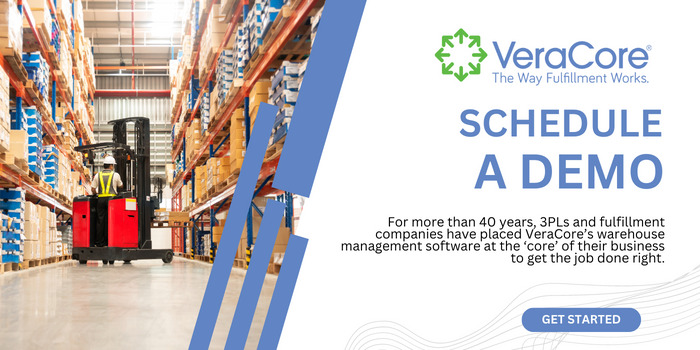Quality control in third-party logistics helps ensure accuracy and consistency in warehouse management. As a result, you can maintain strong relationships throughout the supply chain. As the last mile provider in the manufacturer-to-end user process, your operations must optimize efficiency and ensure products are delivered without issues. Here we explain the importance of quality control and share tips to improve quality control measures for operational excellence and customer satisfaction.
Why Quality is Important
Your job is to tighten existing inefficiencies to save clients time and money and ensure they provide customer experiences consistent with their brand. As a result, you need your team to handle every product that arrives and leaves your warehouse with the same level of care. Using an organized system mitigates risks related to:
- Damage and lost items
- Mispicks
- Mis-ships
- Inaccurate inventory
- Delays that impact the end user
What is Warehouse Quality Control?
Warehouse quality control monitors and evaluates warehouse layout, operations, and processes. It identifies and corrects issues so they never impact the end user. This includes ensuring:
- Items are received safely
- Putaways are accurate
- Allocations are optimized to streamline picking processes
- Technology is leveraged to reduce manual tasks and, in turn, pick errors
- Integrations across the supply chain improve order visibility and operations transparency
- All items in the warehouse are maintained in a consistent manner
- Processes are constantly evaluated to reduce the steps required to get deliveries to the end user
Quality control guarantees nothing leaves the warehouse without ensuring the order is correct, packed safely to meet the specifications of the client, and the end user is completely satisfied
Considerations When Creating Warehouse Management Quality Control Processes
Quality control processes set standards that must be met throughout fulfillment. They provide a systematic method based on data, monitoring, and best practices to ensure that the highest standards are met and that those standards are sustainable to meet customer demand. Improving the process is ongoing, with the ability to pivot and adopt changes to maintain leading-edge industry methods.
The following considerations help you compile a comprehensive step-by-step guide outlining the perfect order delivery scenario:
- Define roles and responsibilities: Who is responsible for quality control planning? What departments must be represented when outlining your processes? What is the approval system to get your plan into action? Who is accountable for each step?
- Identify the steps required: What are the different areas of the warehouse? What steps are handled in each area? Who manages and staffs these areas? What standards must be introduced to improve operations in each area? What will ensure every order is delivered promptly? What are the touchpoints required for each order? What are the items stored? How is allocation determined?
- Identify bottlenecks: Where do you see bottlenecks in the current process? Based on flowcharts, what steps can be taken at each phase to improve efficiencies? What tools are available to help reduce steps?
- Identify typical picking routes: How are picking routes identified to help keep pickers efficient? How is allocation used to reduce travel throughout the warehouse?
- Putaways and putbacks: How are products received and stocked?
- Transparency and tracking: How are products tracked and monitored in the warehouse? How does this impact your customers? How does it affect the end user?
- Order checks: What is the order checking process to ensure everything is perfect before shipment is made?
- Waste: Where can you reduce waste in time, labour, packaging materials, error correction, etc.?
What Your Quality Control Processes Achieve
The above considerations allow you to:
- Identify areas in need of improvement
- Introduce tools to help automate time-consuming processes
- Improve allocation methods
- Create logical workflows across each stage of the receiving, picking, packaging, and shipping process
As a result, you maintain control over each touchpoint to ensure you achieve the highest quality service for every order.
Using Technology to Improve Quality
Warehouse management systems allow you to improve quality control processes in the following areas:
- Scanning and checks to automate the double-checking process before reaching the packing and shipping stage.
- Setting order criteria to alert pickers and team members when an order isn’t handled correctly.
- Improving replenishment by setting minimum thresholds triggers so you never send out incomplete or delayed orders.
- Multiple item order and shipping protocols to provide clear steps of what protocol takes precedence in the order fulfillment process.
- Using smart space allocation to reduce errors such as picking the wrong item for similar-looking items.
- Improving warehouse flow using an organizational structure for effective and efficient SKU allocation, such as placing top sellers closer to packing stations and minimizing walk distances.
Leveraging technology to improve quality control eliminates error-prone manual tasks, streamlines the order fulfillment process, and improves customer service through order visibility.


VeraCore is SaaS order and warehouse management software trusted by top fulfillment companies and 3PLs. Affordable, flexible, easy to use; VeraCore is everything you need to keep clients happy and run a lean operation.
With VeraCore, you can grow your business and handle any challenge with ease. Rules-based automation enables you to control all aspects of your warehouse operation and satisfy each of your clients’ unique requirements.
Hundreds of fulfillment service providers and 10,000+ fulfillment clients place VeraCore at the “core” of their business to get the job done right, for over 40 years.


